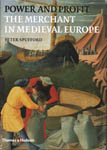Research techniques
Readers often ask me how I go about my research, and comment that I must do massive amounts. Well yes, I do, but it is cumulative and much of it is fun and fascinating. It’s very seldom a chore. I thought I’d take this page to talk a little about the different aspects I bring together to help create a medieval world that I hope my characters would recognise at least a little. No historical novelist, no matter how much research they do is ever going to get everything right. I’ve made my own collection of errors and gaffs, but I do try my best and I am always aware of respecting the people and times about whom I write. I see my research as a braid of five interwoven strands consisting of:
Primary sources | Secondary sources | Visiting locations | Re-enactment | The Akashic record
PRIMARY SOURCES – Original documents, illustrations, artefacts and archaeological details from the period about which I’m writing – essential as base line for the stories and the mindsets of the characters. A list of the reference works I use can be found here.


Right: Oxford Medieval Texts: Dialogus de Scaccario – The course of the Exchequer by Nigel Fitz Richard; and Constitutio Domus Regis – The Establishment of the Royal Household edited and by Charles Johnson

Of course one cannot visit every location, so then I have to rely on maps, guidebooks and the Internet. For example, much of The Falcons of Montabard is set in Middle Eastern warzones and I preferred to research these from a distance!
LIVING HISTORY – OR WALKING THE WALK – One October in the early 1990’s I was on a location visit to Nottingham Castle garnering atmosphere from a medieval pageant being held there. I saw a couple of Norman knights standing at the castle gates intimidating the tourist and was most impressed by their gear. A closer inspection revealed that the guys were wearing real mail shirts rather than knitted silver string and that their kit was authentic replica rather than bits pulled out of the dressing up box. As I got talking to them, they explained that they belonged to a Living History Society called Regia Anglorum that specialised in portraying the early Middle Ages as accurately as possible. They were often hired for documentary work for TV and they had a reputation for striving for accuracy. I realised that here was a resource that I just had to utilise. This was bringing the research off the two-dimensional page and putting it in the here and now in full 3D. It’s one thing to see a photograph of a 12thC cooking pot, the broken pieces glued back together; it’s one thing to see that pot behind glass in a museum, and it’s quite another to cook with an authentic replica – such as supplied by ‘Jim the Pot’ of Trinity Court Potteries. To hold a sword. To walk in replica medieval shoes up a spiral staircase to the battlements and know what it feels like. To look across a field, one’s vision constricted but concentrated by the eye slits of a late 12thC helm. To sail in a long ship. Where else could you get such hands on experience?
Associated links:
- The re-enactment page
- Here is a link to my reference works blog displaying a variety of books in my reference library